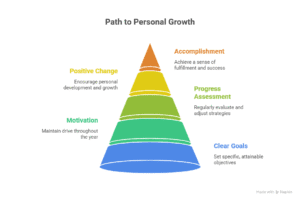On-Demand Outsourcing BPO Services for Healthcare Providers With 24/7 Coverage!
Save up to 70% on staffing costs!
Browse Specialty Staffing ServicesWalk-ins and Emergency Patients Disrupting Schedule

Understanding the Challenge
In any healthcare or clinical setting, unexpected walk-ins and emergency cases are inevitable. While such patients require immediate attention, they can significantly disrupt scheduled appointments, causing delays for those who had pre-booked visits. This disruption often leads to patient dissatisfaction, increased wait times, overworked staff, and logistical issues in managing the day’s workflow.
Emergency care is a priority, but it must be balanced carefully with the needs of scheduled patients. When such disruptions become frequent, they impact productivity, strain staff resources, and reduce the efficiency of clinical operations.
Why This Happens?
Walk-ins and emergencies arise for several reasons:
-
Sudden illness or injury requiring immediate care.
-
Patients unaware of scheduling protocols.
-
Limited availability of urgent care centers after hours.
-
Patients who prefer direct visits to avoid wait times for appointments.
These factors can make it difficult for clinics to maintain an organized and predictable flow of patients, especially during peak hours.
Effective Resolutions

1. Reserve Time Blocks for Urgent/Walk-in Cases
Setting aside specific time slots each day for walk-in or urgent cases ensures that emergencies are handled without severely impacting scheduled appointments. This practice allows flexibility while preserving the structure of the day.
2. Implement Triage Protocols
Triage helps prioritize cases based on urgency. Staff should be trained to quickly assess whether a walk-in case requires immediate attention or can wait until an open slot is available. This ensures that true emergencies receive timely care, while non-urgent cases are integrated into the schedule efficiently.
3. Transparent Communication with Patients
When delays are unavoidable, informing waiting patients promptly and clearly is key. Providing updates on estimated wait times or explaining the situation helps reduce frustration and improves patient trust in the facility.
4. Enhance Scheduling Systems
Adopting modern scheduling software that allows for real-time updates can help staff quickly adjust appointments and alert patients to changes. Automated reminders and alerts can also encourage patients to adhere to their appointment times, reducing late arrivals and no-shows.
5. Increase Staffing During Peak Hours
If data shows patterns in emergency visits or walk-ins, consider scheduling extra staff during those periods. This can reduce the burden on existing staff and help manage unexpected surges more effectively.
Benefits of Addressing the Issue
By implementing these strategies, clinics and healthcare facilities can minimize disruptions caused by walk-ins and emergencies. The benefits include:
-
Shorter wait times and improved patient satisfaction.
-
Better workflow and less stress on healthcare staff.
-
More efficient use of clinical resources.
-
Enhanced reputation for patient-centered care.
What Did We Learn?
While walk-ins and emergency cases are unavoidable, they don’t have to derail the entire day’s schedule. Through structured planning, effective triage, and transparent communication, healthcare facilities can manage these disruptions efficiently. The key is to create a balance between urgent care needs and scheduled appointments to ensure smooth operations and patient satisfaction.
What People Are Asking?
1. How do walk-ins affect scheduled appointments?
They often cause delays and disrupt the planned schedule for other patients.
2. What is the best way to handle emergency patients?
Use triage protocols to prioritize urgent cases and allocate time blocks for emergencies.
3. Can scheduling software help with walk-in management?
Yes, it allows real-time updates, rescheduling, and better communication with patients.
4. How can clinics reduce patient frustration during delays?
Communicate wait times clearly and explain the reason for any delays.
5. Is it possible to prevent walk-ins entirely?
No, but proper planning and reserved time slots can minimize their impact.
Disclaimer:
For informational purposes only; not applicable to specific situations.
For tailored support and professional services
Please contact Staffingly, Inc. at (800) 489-5877
Email: support@staffingly.com
About This Blog: This Blog is brought to you by Staffingly, Inc., a trusted name in healthcare outsourcing. The team of skilled healthcare specialists and content creators is dedicated to improving the quality and efficiency of healthcare services. The team passionate about sharing knowledge through insightful articles, blogs, and other educational resources.
 Book a Demo to Build Your Team Today!
Book a Demo to Build Your Team Today!

 Read Case Studies
Read Case Studies 



 Virtual Medical Assistants
Virtual Medical Assistants



